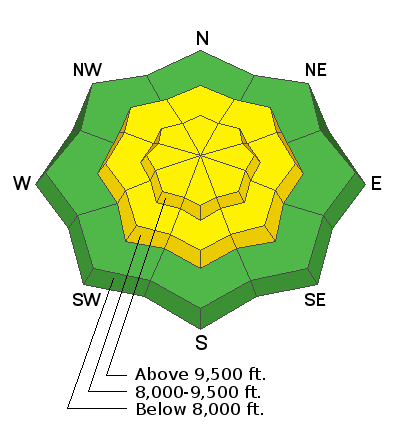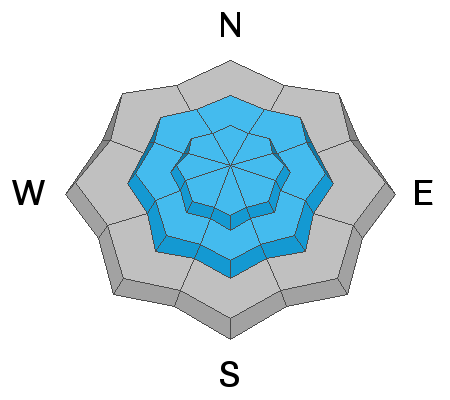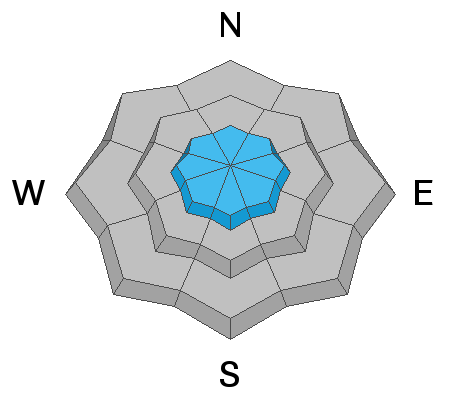PARK CITY AND CANYONS VILLAGE AT PARK CITY ARE CLOSED TO UPHILL TRAFFIC.
ALTA SKI AREA IS CLOSED TO ALL UPHILL TRAVEL FROM 4 PM TO 8 AM . THE ALBION BASIN SUMMER ROAD IS OPEN WITH ACCESS TO THE SUPREME AREA/CATHERINE'S AREA.
BACKCOUNTRY CONDITIONS EXIST.
Covid and the Backcountry - Even in the backcountry and in parking lots, please follow CDC guidelines like limiting group size and keeping a distance of at least 6 feet from other people to protect yourself and others. More info
HERE.
Taking risks - Be extra conservative to avoid the risk of accidents which can stress the capacity of our medical system.
Snowpack Summary: Above 9,000' there exists 1-2.5' feet of snow from storms this past week. This snow fell on bare ground, with warmer/dense snow down near the ground, and colder, low-density snow on top. Along many exposed ridges at the upper elevations, recent and fresh wind drifts can also be found.
This photo provides a nice example of the snowpack in upper Big Cottonwood Canyon in the Salt Lake mountains where there is currently about 2.5' of snow. (Photo: Ashley Grevelink)
Current Weather: Temperatures are in the mid 20's F and southwest winds have increased overnight, averaging in the teens with gusts in the mid 20's mph. At 11,000' winds are gusting in the 50's mph.
For today, temperatures will rise into the low to mid 30's, with increasingly strong southwest/west winds gusting in the 30's mph at the mid-elevations and up to 70 mph along the upper-most ridges. Skies will turn from partly to mostly cloudy, and snow beginning late afternoon, with a few inches of snow possible by sunset. But then things really get going into the overnight hours!
Overnight and into Saturday: The National Weather Service has issued a winter storm warning for the Wasatch mountains from 3 PM today until 4 PM Saturday with heavy snow and very strong winds. Snowfall totals exceeding 1' in the Provo mountains are forecasted by Saturday afternoon, with locally higher amounts possible.
Apart from some minor sluffing in Wednesday's low-density snow, no new avalanches reported from the backcountry Thursday.
We received several excellent observations from Thursday from a variety of locations in the Salt Lake mountains including
Millcreek Canyon, two from Upper Big Cottonwood:
Peak 10,420' and the
Brighton Perimeter, and
Cardiac Ridge along the LCC/BCC divide. It is worthwhile reading
observations to get a sense of the existing snowpack prior to this weekend's strong storm system.












